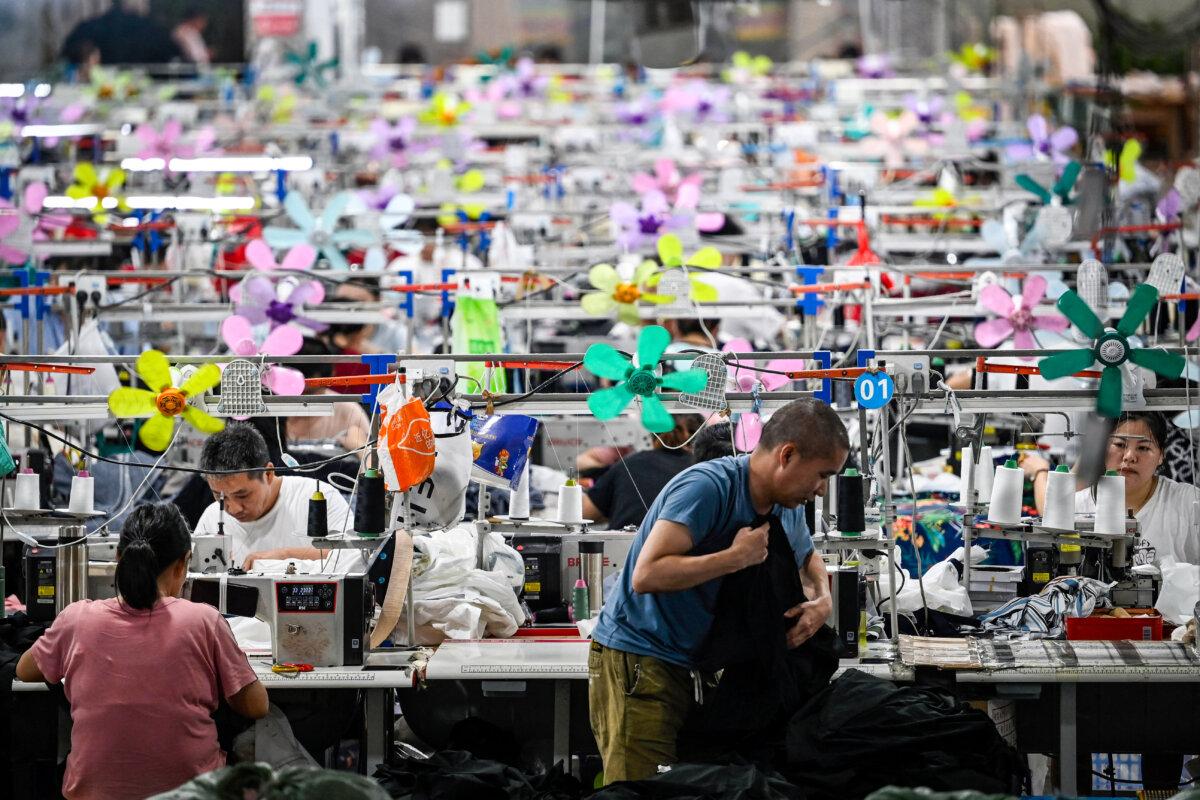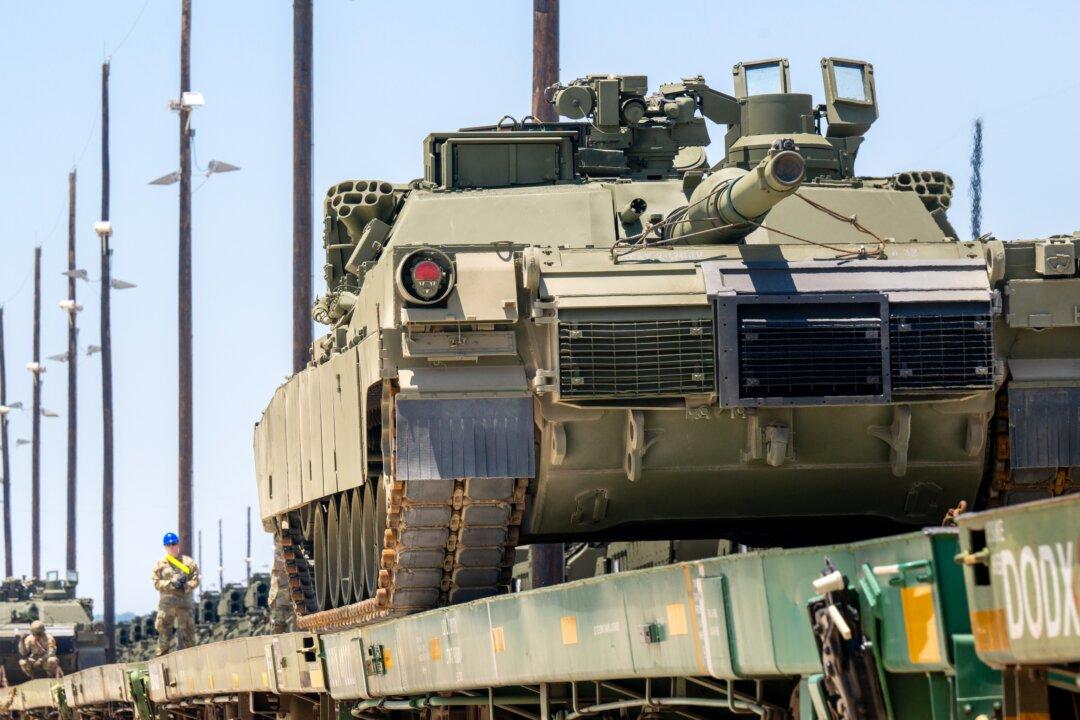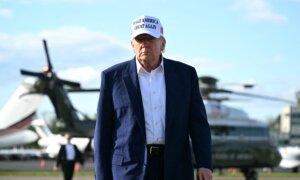President Donald Trump said on May 25 that his tariff policy plans are designed to bolster U.S. military and technology manufacturing, not apparel.
Last month, Treasury Secretary Scott Bessent said at a White House news briefing that the administration is focused on “the jobs of the future, not the jobs of the past.”
“We don’t necessarily need to have a booming textile industry,” Bessent told reporters. “But we do want to have precision manufacturing and bring that back.”
Trump echoed these comments over the weekend.
Before boarding Air Force One in New Jersey on May 25, the president agreed with Bessent that the U.S. economy does not need to increase production of sneakers and T-shirts.
“We want to make military equipment. We want to make big things,” Trump said.
“I’m not looking to make T-shirts, to be honest. I’m not looking to make socks. We can do that very well in other locations. We are looking to do chips and computers and lots of other things, and tanks and ships.”
In a series of posts on social media platform X, the American Apparel & Footwear Association stated that the United States cannot tariff its way “to scale up Made in US clothing.”
“As this is the most highly tariffed industry in the U.S., more tariffs won’t bring back more production, they will only make our wardrobe more expensive. It’s time to shrink fashion tariffs!”
Since returning to the White House, the president has imposed levies on a wide array of products and countries worldwide. The objective has been to boost domestic manufacturing, and scores of U.S. and foreign companies have pledged trillions of dollars in private investment over the past several months.
Last week, Trump said he would impose a 25 percent levy on Apple unless the tech titan moved manufacturing of the iPhone back to the United States.
“I have long ago informed Tim Cook of Apple that I expect their iPhones that will be sold in the United States of America will be manufactured and built in the United States, not India, or anyplace else,” the president said in a May 23 Truth Social post.
He also extended the warning to other smartphone makers, including Samsung.
While the United States does maintain a small smartphone manufacturing presence, it is limited compared with other foreign markets, such as China, India, and Vietnam. Millions of smartphones are shipped to the United States every year, with Apple and Samsung accounting for the vast majority of sales.
The president’s latest remarks come as he pushed a June 1 deadline for a 50 percent tariff on European Union goods to July 9, to allow for trade negotiations between U.S. and EU officials.
Sneakers Made in America
The domestic apparel industry dramatically transformed following the implementation of the North American Free Trade Agreement (NAFTA).In 1991, the United States manufactured 56 percent of domestically purchased apparel, with approximately 900,000 people employed in the industry. Today, less than 3 percent of apparel purchased in the United States is domestically produced, with approximately 84,000 apparel manufacturing jobs remaining.

NAFTA helped kick off the trend. The trade deal eliminated tariffs on apparel and textiles traded between the three North American economies, which bolstered U.S.-made yarn exports. However, many U.S. textile businesses also relocated production to Mexico to take advantage of lower labor costs.
Over the past two decades, a sizable share of textile production moved to China after the country joined the World Trade Organization in 2001. Offshoring and outsourcing accelerated, with U.S. businesses taking advantage of cost savings. Beijing then advanced a comprehensive and highly integrated supply chain network that U.S. and European companies utilized to their benefit.
Chinese-made goods account for approximately 40 percent of U.S. imports of apparel and accessories.
But while Trump and Bessent have not expressed a desire to restore 1991 numbers, the U.S. Trade Representative’s Office says reshoring apparel production is not impossible.
“Reviving apparel production in America is not a pipe dream,” the U.S. Trade Representative’s Office said in a May 3 X post. “‘Made in America’ is an economic and national security priority of this administration.”
AI and Tanks
The president has been open about his plans to make the United States a world leader in artificial intelligence.Nvidia CEO Jensen Huang recently praised the president’s efforts.
“The President would like American technology to win with Nvidia and American companies to sell chips all over the world and to generate revenues, tax revenues, invest and build in the United States,” he said at a May 24 Swedish event.
“Manufacturing in the United States, securing our supply chain, having real resilience, redundancy, and diversity in our manufacturing supply chain—all of that is excellent.”
As for military manufacturing, the United States is already the world’s largest weapons exporter.
Direct military sales by U.S. companies totaled close to $201 billion, and sales arranged by the federal government climbed to nearly $118 billion.







